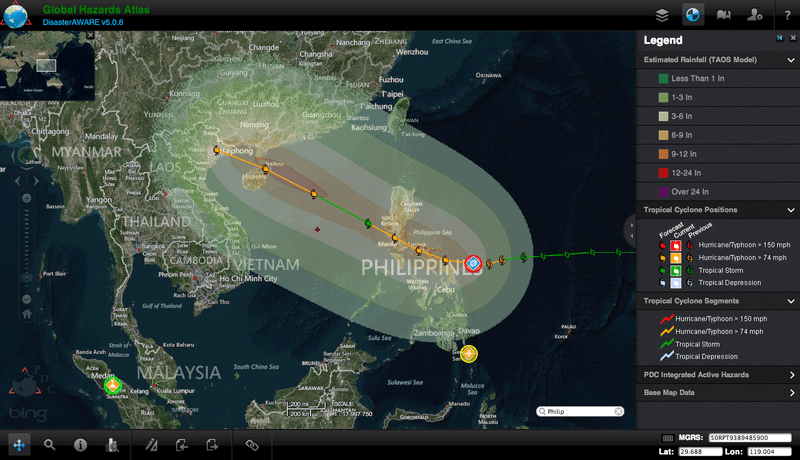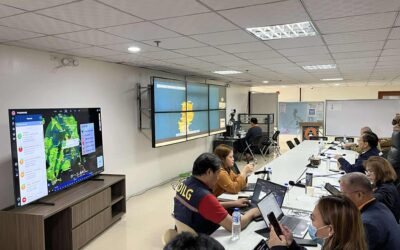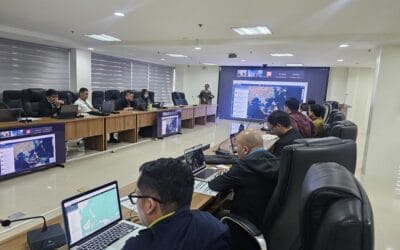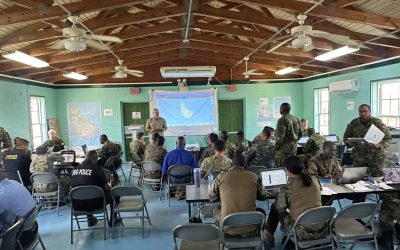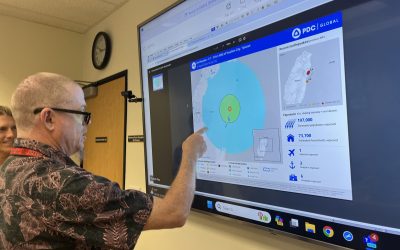The northern islands of the Philippines are readying themselves for the arrival of Typhoon Rammasun (locally named Glenda), the country’s first typhoon since Super Typhoon Haiyan roared across the island nation in November 2013. After moving past Guam as Tropical Depression Nine late last week, the storm strengthened in the Philippine Sea, becoming Tropical Storm Rammasun. The storm is expected to reach the coast of the eastern Bicol region as a typhoon the morning of July 15 (0600 UTC), according to the Joint Typhoon Warning Center (ECHO via ReliefWeb).
Rammasun first formed in the Pacific Ocean, near Guam, on July 10, moving in a westward direction.
Rammasun is forecast to impact the heavily populated Luzon and Visayas regions (NDRRMC). The Philippines National Disaster Risk Reduction Management Council (NDRRMC) has been urging residents to prepare and take the necessary precautions for moderate to intense rainfall, fierce winds, storm surge, and possible flash flooding and landslides in low-lying areas. Philippine radar already shows Rammasun affecting Samar Island, which is the same island at which Super Typhoon Haiyan initially made landfall.
The national weather agency of the Philippines, PAGASA, has already issued multiple Public Storm Warning Signals (PSWS) for a number of provinces in Luzon, including Metro Manila, as well as for Northern Samar in Visayas. Using local media, the chief of the NDRRMC also urged local officials in threatened areas to reach out to his organization for support if needed (Inquirer).
The JTWC expects the storm to weaken as it moves across the central and northern Philippines in a northwesterly direction, crossing Manila on July 16, local time. It is then forecast to continue in a northwest direction into the South China Sea, where it is predicted to strengthen before making another landfall in China, in a northerly area of Hainan Island; and then in Vietnam, near Hanoi (Warning NR #18, USNO).
For more information on Tropical Storm Nine:
• Visit the Joint Typhoon Warning Center for the latest updates,
• View the Philippines NDRRMC situational reports,
• View situational awareness maps from ECHO, or
• Take a look at information from NASA.
ABOUT PDC
Pacific Disaster Center (PDC) is a leading scientific innovator of global risk reduction science and technology. As a University of Hawai’i applied science and research center, our work intersects with a variety of government, community, academic, and scientific organizations at home and around the world to build resilience to natural and man-made hazards—enhancing the capacity to quickly and accurately anticipate and prepare for new and emerging threats. Our innovations in multi-hazard early warning systems, predictive analytics, data science, and machine learning provide decision-makers with the powerful tools and insights they need to navigate today’s complex and interconnected risk landscape.
